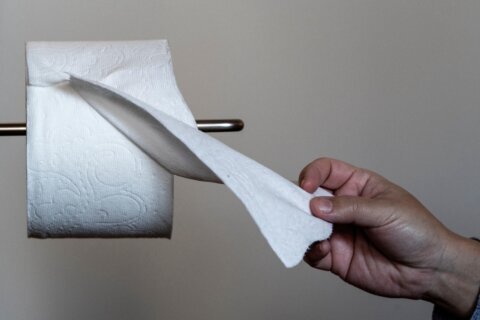This video is no longer available.
If you’ve ever finished a bowl of oatmeal or breakfast cereal, dropped it in the sink, and left for work, you know any remnants will be dried like cement by the time you come home.
Any parent who has ever tried to chisel away hardened flakes, puffs, Krispies or Oh’s after a child tossed a bowl in the sink and hustled to school, has no doubt wondered at how quickly a tasty hot or cold cereal can morph into rock hard residue.
For this teachable moment, WTOP reached out to Rohan Tikekar, an associate professor of nutrition and food sciences at University of Maryland.
“The primary reason here is what we call retrogradation of starch,” said the food professor. “It’s the same logic of why when bread gets stale, it gets hard.”
The chemical reaction begins when you heat or add milk to the dry cereal, which has starch.
“We kind of change the native structure of a starch granule, to kind of open it up and create these long strands of starch,” Tikekar said.
With me “uh-huh”-ing and “I see”-ing, the professor described that when amylose and amylopectin molecules are hydrated, they change.
The difference in taste between piping hot oatmeal and lukewarm oatmeal is striking, with a limited time period before it becomes sticky, then eventually gluey.
“Once you cool this product down, the threads of starch sort of start to entangle with themselves. And the more you cool them, they will entangle with themselves, more and more,” Tikekar said.
And that’s when the oatmeal starts becoming stuck and dried on the bowl..
“As they entangle more and more, they expel out water from them, and then you see this harder texture which is the starch, when the water has come out of it,” Tikekar said.
With the skill of a trained investigative reporter, I asked: “Is it the same for cold cereal in milk?”
“Yes, starch is a main component in all of them,” Tikekar said.
“Depending on which cereal you choose, the nature of the starch might be different,” he said. “And, even within the same cereal, you have different fractions of starch.”
Since the discussion of fractions of starch was leading to terms like “branched polymers,” I feigned understanding, assuming that a fruity cereal would dry differently than a chocolate one.
How to unstick dried cereal from your bowl
Faced with a still-not-scrubbed breakfast bowl, that has cured for hours, the prospect of cleaning it without exhaustive physical labor seems impossible.
Science — and patience — to the rescue.
“What I usually do is put hot water back, and just wait it out,” Tikekar said.
“You’re just changing the direction of the phenomenon,” he laughed. “The moment we add hot water, the fibers will again soak up that water, and loosen up their intertwined nature, and that will make it easier.”
And adding detergent disrupts the binding between the polymer and the coating material of the bowl.
Bottom line, the professor said sometimes real-world situations trump scientific solutions.
“If you’re pressed for time, detergent and scrubbing, you have to do it. But otherwise I just let it sit out to loosen it.”
Get breaking news and daily headlines delivered to your email inbox by signing up here.
© 2024 WTOP. All Rights Reserved. This website is not intended for users located within the European Economic Area.








